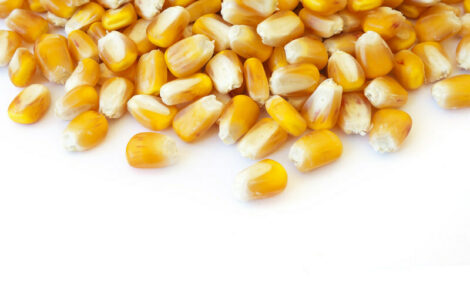



Why understanding protein is critical for the growth, health and wellbeing of your animals
“Protein” is an essential component for all living organisms, but the term itself attempts to encompass the vast range of activities in which it is involved. Proteins make up cell structures, including muscle, hair and nails, but also in mucous, metabolic functions, immune responses, cell replication and the list would continue - all of which are critical for growth, health and wellbeing.It is therefore critical to understand that “proteins” cover a huge range of body control systems that are essential for life.
Amino acids
Protein in all of its various forms is constructed from just 20 individual amino acids:
Amino Acid |
Essential |
|
1 |
Alanine |
|
2 |
Arginine |
|
3 |
Asparagine |
|
4 |
Aspartic Acid |
|
5 |
Cysteine |
Yes |
6 |
Glutamine |
|
7 |
Glutamic Acid |
|
8 |
Glycine |
|
9 |
Histidine |
Yes |
10 |
Isoleucine |
Yes |
11 |
Leucine |
Yes |
12 |
Lysine |
Yes |
13 |
Methionine |
Yes |
14 |
Phenylalanine |
Yes |
15 |
Proline |
|
16 |
Serine |
|
17 |
Threonine |
Yes |
18 |
Tryptophan |
Yes |
19 |
Tyrosine |
Yes |
20 |
Valine |
Yes |
Some of these may be familiar, as by EU Law they must appear on the bag label for complete feed or vitamin/mineral premixes (Lysine and Methionine). Some of these are also known as ‘Essential’, meaning that they can only be provided to the animal by an external source, i.e. food. The non-essential amino acids can be synthesised within the body but are no less important to the biological functions of the animal.
These amino acids fit together like building blocks in various combinations and ratios to form particular proteins. The protein family ‘Keratin’ for example is a structural protein that is critical for skin, hair, horns, scales etc and is composed of 18 amino acids, but in hair the major amino acid is Cysteine, making up around 14% of keratin that can only be provided via the food. Another example would be the family of proteins ‘Mucin’, which is the major component in mucous which protects epithelial lining of the gut, respiratory tract and other regions and of which half the amino acid structure are Serine and/or Threonine.
It can therefore be seen that ‘Protein’ is a catch-all name for a huge range of substances in the body, but each is formed from a combination of amino acids.
Protein Sources For animal Feed
As 11 of the 20 amino acids are essential, they need to be provided in the feed in order for the animal to grow in an optimised, healthy way.
Protein in animal feed is typically provided by Soya, but raw soya has anti-nutritional elements which would cause harm unless it is processed first. Other proteins are also to be considered, depending on the age of digestive maturity of the animal – such as milk powders, speciality processed soya, e.g. Hamlet HP300 and fishmeal for young animals, through to soya meal, rape and sunflower meals, beans, peas, lupins etc as they get older.
Each one of these protein sources has different levels of digestibility, with subsequent consequences on performance, but what is the process?
Protein Digestion
Whole proteins from the feed is first broken down in the stomach into smaller soluble units called Peptides. These peptides are effectively an intermediate between whole proteins and amino acids. The enzyme critical for this is known as Pepsin, which is a highly active protease. If the body were to produce neat Pepsin, it would cause great harm to all the tissues it comes into contact with, which are bound by protein rich membranes. To overcome this, there are specific cells in the stomach, known as Chief Cells which produce a precursor called Pepsinogen. Pepsinogen is converted to Pepsin by the presence of Hydrochloric Acid, which is secreted into the stomach by Parietal Cells.

Young animals have a poorly established acid secretion capability and the conversion of Pepsinogen to Pepsin is compromised. It is therefore critical that the quality and digestibility of these protein sources is considered. From a nutritional perspective the portfolio of available speciality products will include whey protein concentrate, which can be rich in immunoglobulins as well as enzymatically treated soya products such as Hamlet Protein HP 300 as a replacement or to complement to fishmeal has questions of sustainability and often quality. The greater the digestibility, the higher the degree of conversion from protein to soluble peptides.
These soluble peptides leave the stomach and are then subject to other powerful proteases in the small intestine known as Trypsin, Chymotrypsin Carboxypeptidase. Once again, to avoid the body digesting itself, precursors known as Trypsinogen, Chymotrypsinogen and procarboxypeptidase are produced from the pancreas and are converted to their active form by enterokinase produced from cells in the duodenum.
These enzymes then further break the soluble peptides from the stomach into smaller units, which are then subject to further proteases in the small intestine until they are broken down into their individual amino acids.
These amino acids are then transported through the epithelial cells of the small intestine and enter the blood stream where they are available to be reconstructed into whatever is required of them. In many ways it is ironic that the protein digesting enzymes described above are actually proteins in their own right and would have been formed from the amino acids which had previously been part of proteins in the feed.
Efficiency of digestion
It is important to understand that not all the protein consumed is digested, as many proteins are resistant to digestive enzymes, or they are being offered to an immature digestive system. This makes the choice of feed ingredients critical to the stage of production. This choice is not only driven by optimising genetic potential of the animal, but also economic, environmental and sustainable issues are key drivers.
A quite realistic proportion of a diet to be digested would be around 84%, meaning that 16% is excreted in the dung. From the 84% which is digested, converted into amino acids and circulating in the blood stream around 47% is retained in the body – such as muscles, skin, hair, mucous, enzymes, immune system etc. with the reaming 53% being deaminated and excreted in the urine, representing around 45% of the initial intake.
With protein being ≈16% Nitrogen, any waste has environmental impacts, so how can we reduce this?
The most fundamental would be to feed ‘ideal protein’, which is a protein with 100% digestibility and the exact amino acid balance required by the animal on any given day. This would require assessing the exact ratio of all 20 amino acids and ensure that the 11 essential ones are supplied in the feed in precisely the correct amount. The trouble with this method is that the vast majority of protein sources are not 100% digestible and certainly not ideally balanced with their amino acid content. Any dietary imbalances can be rectified by the use of synthetic amino acids, but this can become prohibitively expensive and therefore economically unviable.
Putting this into context, Extracted Soya Meal (Hipro) will have a crude protein content of typically around 46%, of which 89% is digestible. Extracted sunflower meal has around 36% crude protein (though this can differ widely between extraction methods) and a digestibility 83% and extracted rape meal has a crude protein of 33.5% of which 76% is digestible. At the other end of the scale and considering just the digestibility of the protein, dried whole milk would be 95% digestible, HP 300 at 93% and fishmeal around 90%. The then demonstrates the considerations in raw material portfolio when creating diets for specific classes of animal.
Undigested protein is particularly important to the post-weaned pig, as it can cause ‘nutritional scour’ where the gut tries to evacuate this material by pouring water into the lumen of the gut as a purge. Undigested protein can also become a food source for enteric pathogens such as E. coli, Salmonella, Lawsonia etc.of which we have fewer and fewer treatments for. Indeed, come August 2022, the EU will no longer be able to utilise BP grade Zinc Oxide as a way of controlling E. coli and greater consideration to dietary makeup is absolutely essential.
A unique processing technique
Given the understanding and importance of protein digestibility, Hamlet Protein have created a processing technique which takes soya and improves not only the crude protein content but also reduces any anti-nutritional factors as well as increasing overall digestibility. The product HP 300 has therefore been specifically designed for use in piglet starter feeds. At 56% crude protein, it is ten percentage points higher than standard Hipro Soya and with a digestibility of 92.9%, there is far less undigested protein entering the hind gut.
HP 300 would comfortably be a part replacer for fishmeal, which can be very variable in its protein content and digestibility, depending on processing and drying treatments. It also complements other components of a starter feed, such as the milk powders in creating a diet that targets optimised healthy growth in the young pig.









